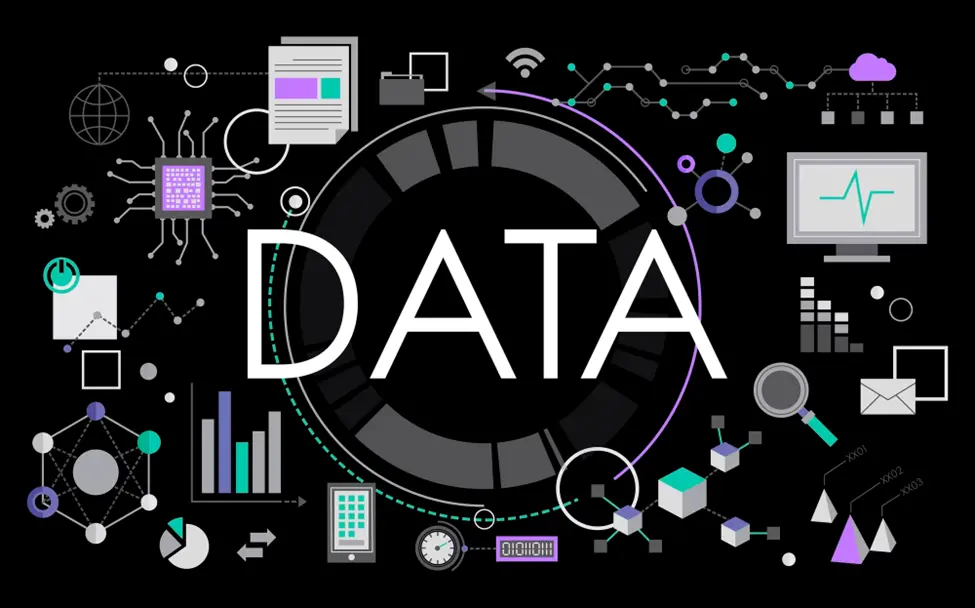We all have been there. Tons of raw data with no hope of making sense of it. But wait, this should no longer be the case for you. You can turn that mess into insights with data parsing. Perhaps, this is that very the solution you’ve been searching for so long. So, let’s explore what data parsing means together. You’ll also learn how to use this practice to get quality insights from data.
Exploring the definition of parsing data
You probably get data from various sources: text files, web pages, databases, or whatnot. The data formats also vary from text to symbols. There is also structured, semi-structured, and unstructured data. If you don’t bring all the information to a single format, you may end up having inaccurate analytical results or making poor decisions. And that’s not what you want, right?
So, parsing is the first step in ensuring your raw information collected in different formats is usable for analysis or further processing. So, what is data parsing? Let’s see.
In simple words, parsing data definition reads that this is the process of systematically converting raw, unstructured data into a more readable and usable format.
How does data parsing work?
So, how you can transform a jumble of numbers, letters, and symbols into meaningful insights for your business? And what does it mean to parse data? Here is a quick breakdown for you.
- You’ll need your raw data, which you may obtain with web scraping. This might come from websites you frequent, APIs you use, documents you’ve saved, or feedback from your customers.
- Your data has its own patterns. Your task is to identify these recurring elements (specific keywords, dates, product codes, etc.).
- Once you’ve identified patterns, you should break the data into bite-sized pieces, or ’tokens.'
- Now, you arrange these tokens into a clear structure.
- With everything in place, you transform these structured data pieces into a format you can easily use (a database, an XML file, or anything that suits your needs).

What are the types of data parsing?
It comes as simple as that. You use different parsing techniques to interpret different data types. So, what is parsing going to look like for the most common formats?
- XML parsing. Have you ever come across data wrapped in tags? That’s XML (Extensible Markup Language). When you parse XML, you’re extracting the data within these tags. Most importantly, maintaining hierarchical relationships between those elements.
- JSON parsing. If you’ve worked with web applications, you’ve likely met JSON. Here, you convert the structured data pieces into information your applications can readily use.
- CSV parsing. Have files with data separated by commas? That’s CSV, a favorite for many spreadsheets and databases. Your task is to organize this data and turn comma-separated values into clear rows and columns.
- HTML parsing. Every time you browse a website, you’re interacting with HTML. It’s filled with links, text, and images. So, during this parsing, you extract all these elements and transform them into structured data you can work with.
- PDF parsing. We all love how PDFs present documents, but extracting data from them? That can be tricky. With parsing, you pull out the text, images, and tables from your PDF files.
Advantages of data parsing
Enhanced data accessibility
We’ve all been there: staring at a screen filled with raw data, feeling a mix of overwhelm and confusion. Where should you start? Do all these data entries make any sense?
As you parse the data, you turn that intimidating data into something you can easily flip through and understand. Instead of rows of codes, symbols, or disjointed numbers, you get clear categories, labeled columns, and organized sections. Very convenient.
Moreover, when you make data more approachable, it becomes a tool rather than a challenge. You can interact with it, ask questions, and get answers. Want to know how many customers preferred Product A over Product B last month? Or which service page on your website gets the most visits? With parsed data, these answers are just a quick glance away.
Guide your business choices
Sometimes making a decision can feel like standing at a crossroads. Which path leads to growth? Which one fosters innovation? Which choice will resonate with your customers?
And in this instance, data parsing can become your compass. With it, you’re not just guessing which way to steer. You’ve got a reliable guide showing you the way.
Let’s say you’re thinking of launching a new product. Instead of just crossing your fingers and hoping it’ll be a hit, parsed data lets you peek into the past. What did your customers love before? Where did similar products hit or miss? Of course, you’ll need to run data mining at first to collect that raw information.
Save time and resources
Let’s get real for a moment. Time is one of those things we all wish we had more of. Between meetings, strategy sessions, and day-to-day operations, the last thing you want is to get bogged down by heaps of messy data.
So, data parsing is here to take the heavy lifting for you. The team that takes on this task will sift through raw data, sort it, and make sense of it. And you get a clear, organized picture right from the get-go instead.
But this is also about efficiency. Every minute you save by not wrestling with unruly data is a minute you can invest elsewhere. Maybe it’s brainstorming the next big idea, connecting with a client, or even just taking a well-deserved coffee break.

Challenges in data parsing
You probably know it—dealing with data is not easy. And handling parsing is no expectation.
First, it’s because of the data volume. Those vast amounts of information from diverse sources… You know there’s a complete picture in there somewhere, but where do you even begin?
Then there is the inconsistency challenge. Data points from different places might not fit right, or they may look like they’re from another place altogether. These inconsistencies can throw a wrench in the parsing process. As a result, you may get inaccuracies or incomplete results.
Another challenge is the ever-evolving nature of data. Just as you’re figuring things out, new data comes in, old data changes, and suddenly you’re playing a whole new game.
Lastly, there’s the human element. While we all rely on automation tools for parsing of data, nothing will ever replace humans. We spot patterns, make connections, and sometimes, just have that gut feeling about where a piece should go. However, the team should have the right skills and knowledge to oversee and manage the parsing process to achieve the utmost results.
Best practices for effective data parsing
We bet you want to make your data parsing flow run smoothly and efficiently, don’t you? So, here are some tips that will make a difference.
💡 Before you proceed with other steps, ensure the data you'll be parsing is of high quality. Cleanse and preprocess the raw data to remove any inconsistencies, duplicates, or errors. The cleaner your starting point, the smoother the parsing process.
- Keep your algorithms updated. Schedule periodic reviews. Stay updated with industry trends (for this, you may want to subscribe to industry blogs or attend webinars). Use automated testing tools to regularly test your parsing algorithms against new data sets.
- Implement error handling mechanisms to identify, log, and address any issues that arise during parsing. Categorize errors based on severity or type to prioritize them. For critical errors that can disrupt the parsing process, set up real-time alerts. If there are recurring errors with known solutions, consider automating the fix.
- Consider modular parsing. Instead of creating a monolithic parsing process, break it down into distinct, manageable units. It has a range of advantages. If one module needs changes, you can tweak it without affecting the others. When issues arise, it’s much simpler to pinpoint the problem in a modular system. You can easily add new modules or expand existing ones to handle increased data volumes or additional data types.
- Document your process. This will ensure that everyone, from newcomers to seasoned team members, understands the process’s design and intent. So, begin documenting from the inception of your parsing process. Cover every aspect, from the high-level overview to the nitty-gritty details of specific algorithms or tools. Create flowcharts, diagrams, and other visual tools to make complicated things easier. Ensure that the documentation is easily accessible to all relevant team members.
Bottom line
Data parsing can feel a bit challenging, but oh-so-rewarding. And while we’ve covered the ins and outs of this process, there’s one thing that stands out: having the right partner can make all the difference.
At Nannostomus, we’re passionate about data, and we genuinely want to see you succeed. So, if you’re looking to transform those heaps of data into meaningful insights, let’s do it together. Drop us a line, and we’ll discuss further details.




